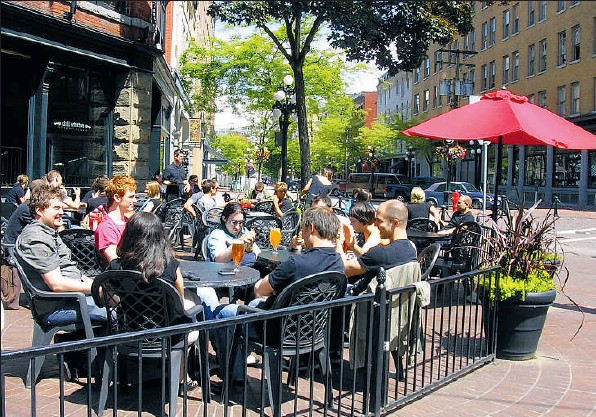Stuart Hunter
Province
B.C.’s business community has given a thumbs-up to the B.C. government’s plan to harmonize the provincial sales and GST effective July 1, 2010.
But some business groups say the devil could be in the details.
Premier Gordon Campbell and Finance Minister Colin Hansen said in Vancouver Thursday that the new blended 12-per-cent Harmonized Sales Tax will be the lowest in Canada, promoting productivity and economic growth and creating jobs.
“This is an essential step to make our businesses more competitive, encourage billions of dollars in new investment, lower costs on productivity and reduce administrative costs to B.C. taxpayers and businesses,” Campbell said in a news release.
“Most importantly, this will create jobs and generate long-term economic growth that will in turn generate more revenue to sustain and improve crucial public services.”
By fusing the seven-per-cent B.C. provincial sales tax with the five-per-cent federal Goods and Services Tax, B.C. will have a 12-per-cent HST, removing more than $2 billion in costs for businesses.
Hansen called the PST “outdated, inefficient and costly” and, in some cases, a hidden tax.
Ottawa will administer the tax, saving Victoria an estimated $30 million annually.
Business Council of B.C. economist Jock Finlayson said the timing was right for the HST, given Ontario‘s proposal to implement a single value-added tax at 13 per cent July 1, 2010.
“It is a move that is going to be strongly endorsed by many in the business community,” Finlayson said. “Compliance costs will be reduced, which will make life easier for most businesses. It’s also good for Canada because the Canadian economic union will function better.”
Helmut Pastrick, chief economist with Central 1 Credit Union, was cautiously optimistic, saying many details have yet to be resolved. “In general it is a positive move,” he said. “It reduces the tax burden on businesses, which in turn promotes investment and expansion.”
Asked if the HST will help B.C. out of the economic downturn faster, Pastrick said: “That is largely dependent on other forces. In the medium and long term — yes.”
Brian Bonney, director of provincial affairs with the Canadian Federation of Independent Business, was somewhat surprised by the announcement but welcomed it.
“Overall, small businesses in B.C. will be happy,” Bonney said. “The negative side is
. . . this announcement has come out of the blue. We just went through an election and there was no mention of this.”
Government should sit down with business to work out what the HST means for the restaurant industry, drugs and medicines, and border towns, Bonney said.
NDP finance critic Bruce Ralston said the HST will result in families and seniors paying more for items such as vet bills, hydro bills and hair cuts in trying financial times.
– – –
Savings by Sector
Harmonized Sales Tax will deliver B.C. businesses an estimated $2 billion in savings, Victoria says.
– Construction saves $880 million
– Manufacturing saves $140 million
– Transportation saves $210 million
– Forestry saves $140 million
– Mining, energy saves $80 million
– Business compliance costs will be cut by $150 million
– The HST will give consumers point-of-sale rebates on products such as gasoline and diesel, books, children’s clothes and car seats, diapers and feminine-hygiene products.
© Copyright (c) The Province




